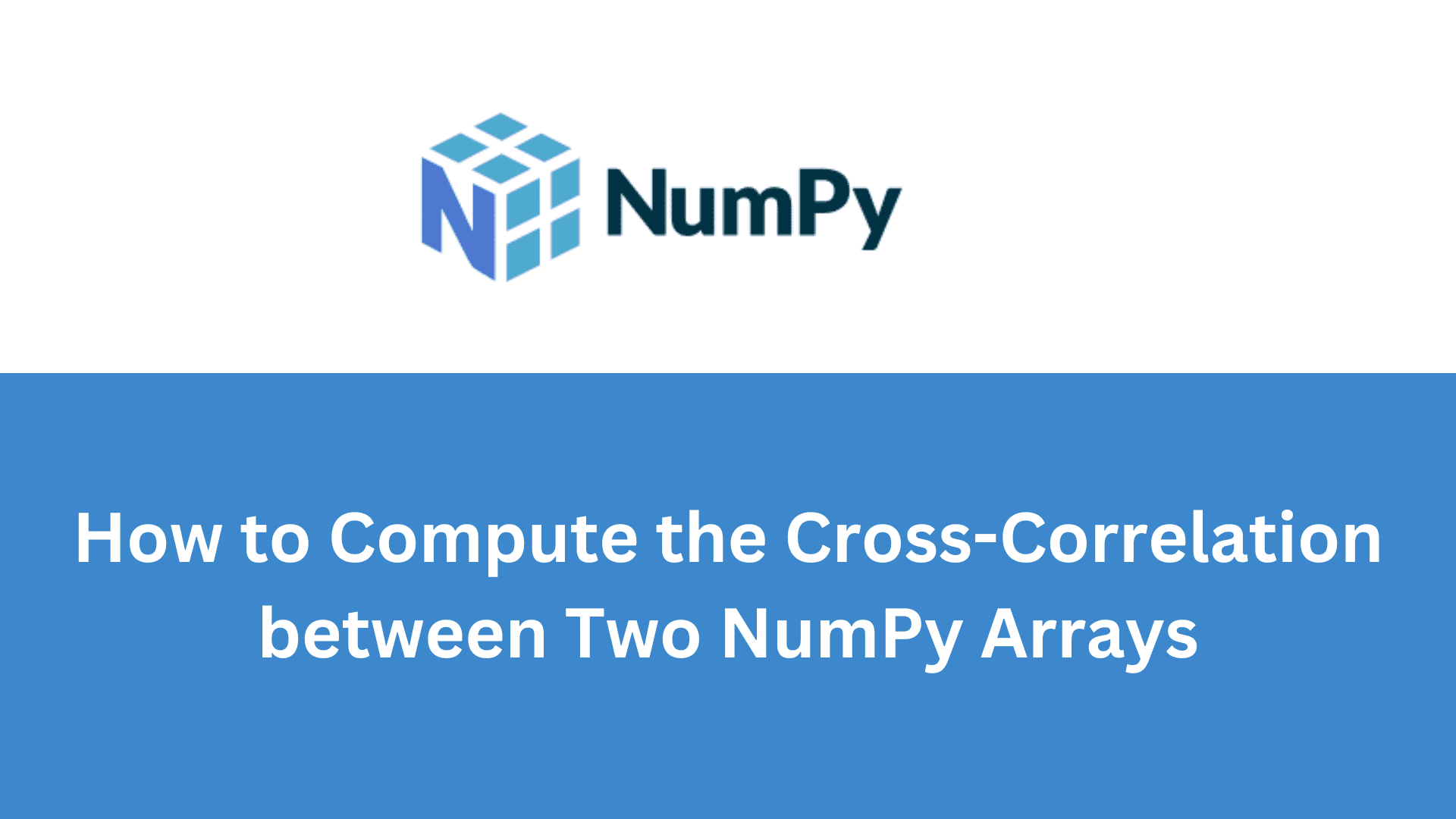
Cross-correlation is a method for measuring the similarity or relationship between two sequences of data as one is shifted in relation to the other. It helps you see how well one series matches or relates to another.
Our Top 3 Course Recommendations
![]()
![]() 1. Google Cybersecurity Certificate – Get on the fast track to a career in cybersecurity.
1. Google Cybersecurity Certificate – Get on the fast track to a career in cybersecurity.
![]()
![]() 2. Google Data Analytics Professional Certificate – Up your data analytics game
2. Google Data Analytics Professional Certificate – Up your data analytics game
![]()
![]() 3. Google IT Support Professional Certificate – Support your organization in IT
3. Google IT Support Professional Certificate – Support your organization in IT
Imagine you have two signals or time series, like stock prices or temperature readings. Cross-correlation checks if some patterns or shifts align between them. It’s a handy way to determine whether changes in one dataset could predict changes in the other. It is helpful in fields like signal processing, data analysis, and other fields to find patterns or correlations between datasets.
What is np.correlate?
np.correlate is a function in NumPy used to compute the cross-correlation of two 1-dimensional arrays. This function slides one array over the other and computes the sum of element-wise products for each shift.
numpy.correlate(a, v, mode="valid")
The mode parameter in np.correlate determines the length of the output array and the extent of the overlap between the input arrays. The modes are full, valid, and same.
- mode=”full”: Computes the full cross-correlation, including all possible overlaps between the arrays. This mode gives the longest output array.
- mode=”valid”: This computes the cross-correlation only where the arrays fully overlap. This mode gives the shortest output array.
- mode=”same”: This mode returns an output array of the same length as the first input array. This mode centers the cross-correlation around the middle of the overlap.
Computing the Cross-Correlation
Import NumPy: First, make sure you have NumPy installed. If not, you can install it using pip install numpy. Then, import NumPy in your Python script:
Create Your Arrays: Let’s create two sample NumPy arrays. These could represent any sequences of numbers you’re interested in analyzing.
A = np.array([1, 2, 3, 4, 5])
B = np.array([5, 4, 3, 2, 1])
Compute Cross-Correlation: NumPy provides a handy function called np.correlate to compute cross-correlation. Here’s how you can use it:
cross_corr = np.correlate(A, B, mode="full")
- A and B: These are your input arrays
- mode=”full”: This ensures that we get the full cross-correlation, showing all possible shifts
Understand the Output: The result is an array of cross-correlation values. Each value represents the similarity score for a particular shift:
Output:
[ 1 4 10 20 35 44 46 40 25]
Here’s what these values mean:
- The middle value (55) is the cross-correlation when the arrays are perfectly aligned.
- Values to the left and right represent cross-correlation when array B is shifted to the left and right.
Visualize the Shifts (Optional): Sometimes, it’s helpful to visualize how the arrays align at different shifts. You can do this by plotting the arrays at different positions:
import matplotlib.pyplot as plt
# Plot original arrays
plt.subplot(3, 1, 1)
plt.plot(A, label="A")
plt.plot(B, label="B")
plt.legend()
# Plot arrays with B shifted left
plt.subplot(3, 1, 2)
plt.plot(A, label="A")
plt.plot(np.roll(B, 1), label="B shifted left")
plt.legend()
# Plot arrays with B shifted right
plt.subplot(3, 1, 3)
plt.plot(A, label="A")
plt.plot(np.roll(B, -1), label="B shifted right")
plt.legend()
plt.show()
This will give you a visual sense of how the arrays match up at different positions.


Conclusion
Understanding and computing cross-correlation between NumPy arrays is very simple and straightforward using the np.correlate method. You can easily measure the similarity between two sequences, helping you discover relationships in your data.
So, the next time you encounter two datasets and wonder how they might be related, remember the power of cross-correlation and the simplicity of NumPy. You can check out the official documentation for more information.
Shittu Olumide is a software engineer and technical writer passionate about leveraging cutting-edge technologies to craft compelling narratives, with a keen eye for detail and a knack for simplifying complex concepts. You can also find Shittu on Twitter.
